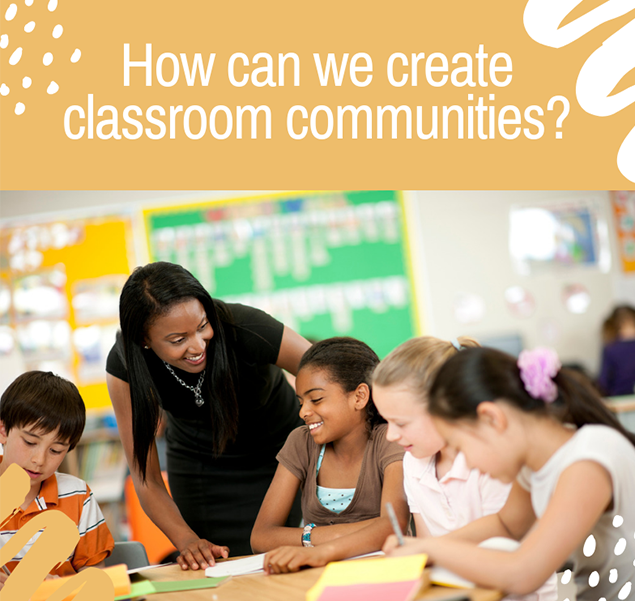Creating Classroom Communities
Posted by Network Support · Leave a Comment
Creating Classroom Communities
Children develop a sense of belonging to their families and communities from a young age. Next to homes, schools are where students spend most of their time. This makes it important for schools, especially classrooms, to present themselves as a community, making students feel included, valued and connected to each other.
Classroom communities can have a positive influence on student behavior and performance. A strong, safe and positive classroom community can help students by:
Improving academic performance: An inclusive classroom community understands and accepts that every student is unique and different. In these classrooms, teachers plan and differentiate instructions and pedagogy to address the learning needs of every student. Acceptance of each student’s individuality instills students with a sense of security and confidence, motivating them to work harder and perform better.
Encouraging students to overcome fears: Fear of judgements, reprimands, and making mistakes can cause students to be hesitant and cautious about participating actively in class. In a positive classroom community, such barriers can be overcome, as mistakes are accepted as part of the learning process and students are encouraged to learn from their mistakes. Such positive thinking can help students overcome their inhibitions and fears and actively participate in class and school activities.
Increasing accountability: The keywords of classroom communities are collaboration and partnership. Teachers and students work together towards attaining their teaching and learning goals, and establishing class rules and responsibilities. This helps to increase student accountability regarding compliance to rules, resulting in demonstration of acceptable classroom behaviors.
Modeling positive qualities: When classroom communities model qualities of nurturing, respect and understanding, students learn to apply these qualities in their lives. Students learn to be tolerant of other perspectives, to communicate and collaborate with peers, and to treat them with kindness. Students begin to value and respect themselves and to prevail against obstacles like bullying and hazing.
Creating Classroom Communities
Here are some ways in which teachers can create classroom communities:
- Start on a positive note: Start every class on a positive note, be it a cheerful greeting, using a motivational quote or a funny anecdote.
- Know your neighbors: It is important that both teachers and students know each other. A simple way of getting to know each other is to pair up (teachers included). Students can be instructed to spend the next minute talking to their partners and learning new information about their peers. This activity can be repeated a few times at the start of the school year to help students get to know each other.
- Seek and assist: Teachers must show students that they care. Inquire and be aware of difficulties faced by students. Rather than waiting for students to approach teachers for assistance, teachers can regularly check with students to see if they require any assistance with academics or other school-related issues.
- Encourage mentoring: Encourage students to help each other by creating peer mentoring programs. Mentoring groups can help students communicate, interact and collaborate with each other, while simultaneously sharing information and supporting each other’s academic growth.
- Model positive behaviors: Children often learn by imitation, therefore, it is crucial that teachers demonstrate the positive behaviors that they want to instill in students. For instance, students may learn to be “good listeners” by observing the verbal and nonverbal communicative practices of their teacher.
- Reinforce achievements: Teachers can help students develop their confidence by reinforcing their achievements. In classrooms that are diverse with unique traits and talents, achievements may not always be academic. Even so, teachers must acknowledge the many different types of achievements, and help students find pride in their talents.
Classroom communities provide a safe and secure environment in which students are nurtured, inspired, motivated and taught to be responsible and caring citizens.
Like this article for teachers?
Browse the Professional Learning Board COURSE CATALOG to find related online courses for teachers in your state. Professional Learning Board is a leading provider of online professional development classes that teachers use to renew a teaching license or renew a teaching certificate.





